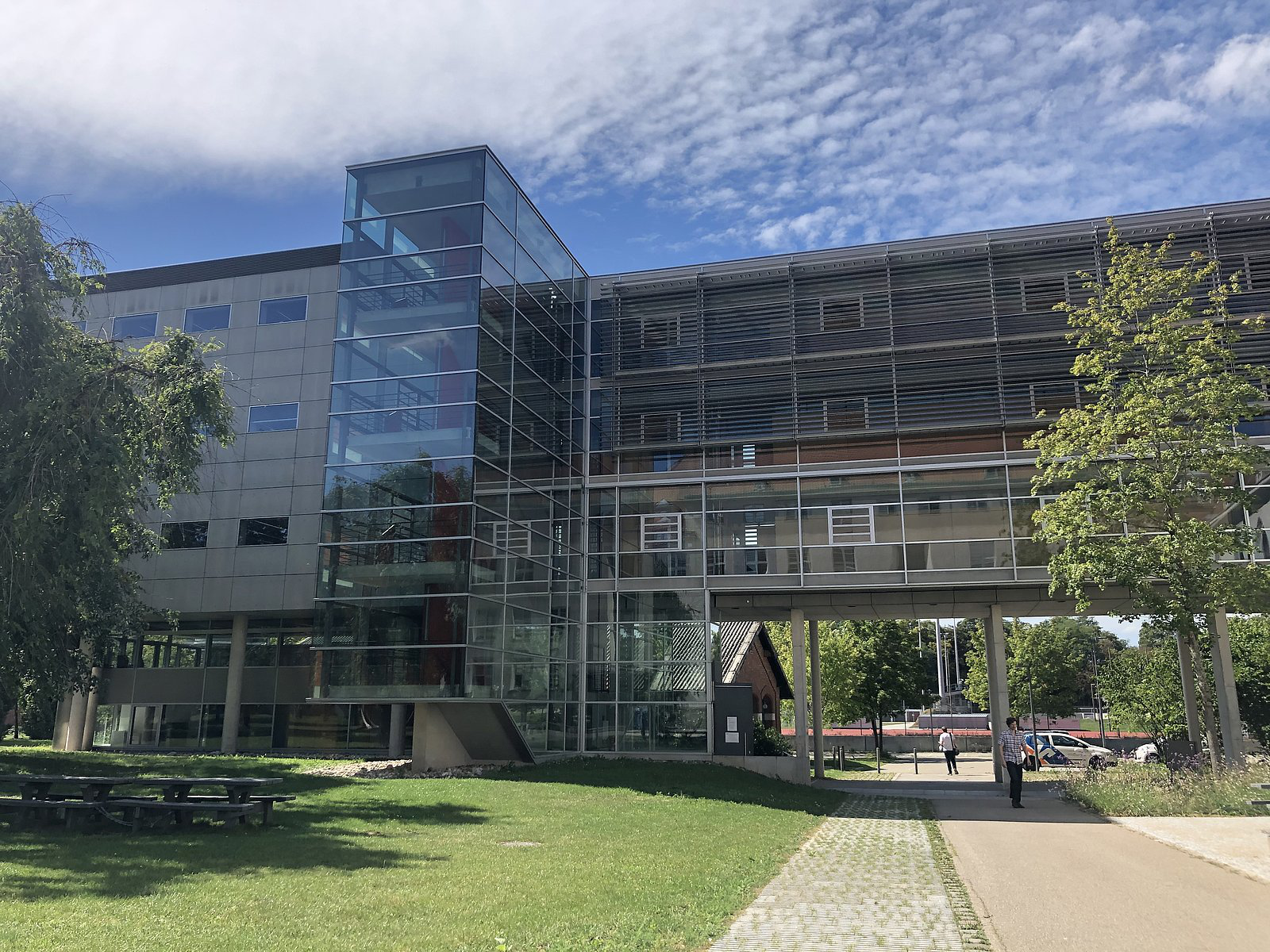InterPore German Chapter Meeting 2023
- Program
13 - 14 September 2023, Ingolstadt
During the sessions each presenter will give a 15-minute presentation, followed by a 5-minute Q&A.
(You can find the detailed program of each session below)
Wednesday 13 September
09:00 - 09:20 Registration & Welcome
09:20 - 11:00 Presentations: Session I
11:00 - 11:30 Coffee Break
11:30 - 12:15 Invited Lecture: Carina Bringedal
12:15 - 13:30 Lunch
13:30 - 15:10 Presentations: Session II
15:10 - 15:45 Coffee Break
15:45 - 17:25 Presentations: Session III
Thursday 14 September
09:00 - 11:00 Presentations: Session IV
11:00 - 11:30 Coffee Break
11:30 - 12:15 Invited Lecture: Sergey Oladyshkin
12:15 - 13:30 Lunch
13:30 - 14:50 Presentations: Session V
14:50 - 15:15 Coffee Break
15:15 - 16:00 Meeting of the Steering Committee
- Invited speakers
|
Carina Bringedal (Western Norway University of Applied Sciences) Title: Analysis and simulations of evaporation-driven density instabilities in porous media
Abstract: For soils saturated with saline water, evaporation of water induces accumulation of salt near the top boundary of the soil. This causes a density difference in the saline water, where the saltier water near the top is denser than the water below. In this setting, density instabilities in the form of fingers can form in the porous soil and can eventually lead to a net downwards transport of salt. If these density instabilities do not appear, the salt concentration will continue to increase until the solubility limit is exceeded. Then salt precipitates and form a salt crust at the top of the soil, which hampers plant growth and affects biological activities. Hence, whether density instabilities appear and how they evolve have a large impact on the soil. In this talk, I will present linear stability analysis and numerical simulations of this problem. The linear stability analysis relies on rather restrictive assumptions but can give criteria for the onset of instabilities for a large range of parameters, like soil permeability and evaporation rate. Numerical simulations of the full system are expensive but can give detailed information about the further development of the density instabilities after onset for a given set of parameters.
|
|
Sergey Oladyshkin (University of Stuttgart, Institute for Water and Environmental Systems Modeling) Title: Physics-Aware Neural Networks for uncovering unknown processes and leveraging the significance of Homogeneous Chaos Theory for learning Abstract: Understanding complex hydrosystem processes is crucial for environmental modeling. Traditional modeling approaches have limitations, leading to the exploration of machine learning (ML) models like Deep Artificial Neural Networks (DANNs). However, DANN models have limited generalization and interpretability. To address this, we have developed a hybrid-modeling framework called Finite Volume Neural Network (FINN) that combines numerical methods with DANNs. FINN produces interpretable results, outperforming other existing DANN models by accurately differentiating physical processes and learning close relations for flow & transport problems without relying on parametric models. Recognizing the potential of neural network-based concepts, we analyzed also the processing of neural signals within black-box machinery. Most existing DANNs process signals in a non-orthonormal manner. To address this limitation, we propose a novel perspective on neural signal processing in DANNs using recent advances in the theory of polynomial chaos expansion. By embedding such a theory into the kernel DANN structure we establishing Deep arbitrary Polynomial Chaos Neural Networks (DaPC NN) that processes neural signals in an orthonormal way and accounts for high-order neural effects. Our experiments demonstrate that the DaPC NN structure consistently outperforms conventional DANNs in learning physical processes. Our findings highlight the potential of ML approaches to enhance the understanding of complex environmental processes, even when only partial knowledge is available. However, achieving successful modeling of complex systems requires additional efforts in further hybridization, flexible generalization and efficient signal processing. |
During the sessions each presenter will give a 15-minute presentation, followed by a 5-minute Q&A.
Session I: Wednesday 13th Sept, 09:20 - 11:00
10:00 - 10:20 Microscale simulation of reactive flow in particulate filter based on tomography high-resolution images (Liu Tao, Pavel Toktaliev, Oleg Iliev, Martin Votsmeier)
Session II: Wednesday 13th Sept, 13:30 - 15:10
Session III: Wednesday 13th Sept, 15:45 - 17:25
16:25 - 16:45 Modeling microstructure dynamics and mass transport kinetics in drying capillary porous media (Jing Chen, Xiang Lu, Abdolreza Kharaghani)
16:45 - 17:05 Adaptive pore network model for the calcination of limestone: A comprehensive study of intraparticle transport effects (Xiang Lu, Abdolreza Kharaghani)
Session IV: Thursday 14th Sept, 09:00 - 11:00
09:40 - 10:00 Addressing Unresolved Microporosity in Multi-Scale Reconstruction of Rock Images (Abolfazl Moslemipour, Saeid Sadeghnejad, Frieder Enzmann, Davood Khoozan, Michael Kersten)
10:00 - 10:20 Evaluation of phase and inter-phase fractal dimensions during two-phase primary drainage in a microfluidic cell (Nikolaos Karadimitriou, Alexandros Terzis, Dongwon Lee, Samaneh Vahid Dastjerdi, Holger Steeb)
Session V: Thursday 14th Sept, 13:30 - 14:50
14:10 - 14:30 Prediction of permeability reduction after particles deposition at the pore scale using convolutional neural networks (Javad Razavinezhad, Saeid Sadeghnejad, Abolfazl Moslemipour, Davood Khoozan, Thorsten Schaefer, Frieder Enzmann, Michael Kersten)

